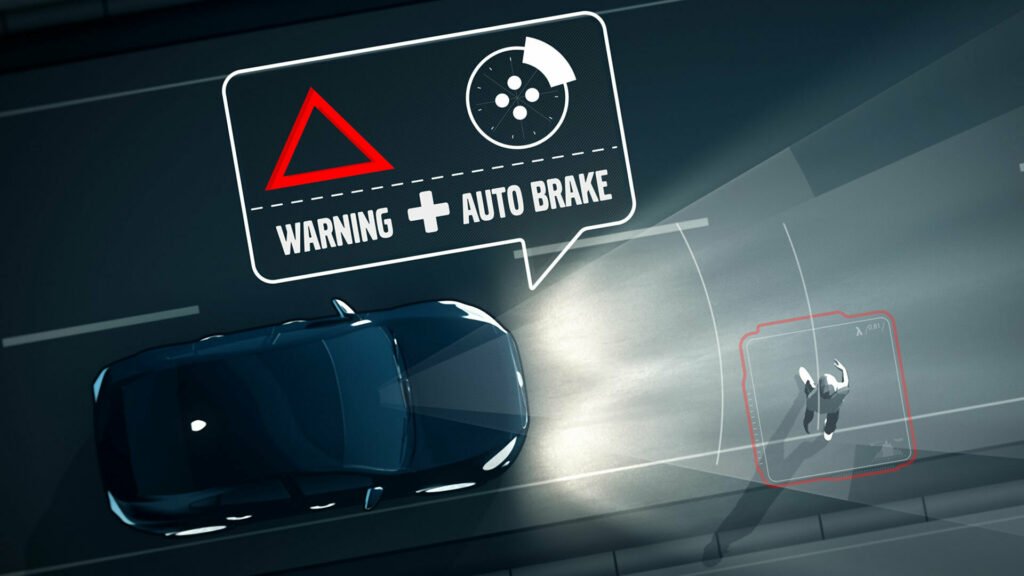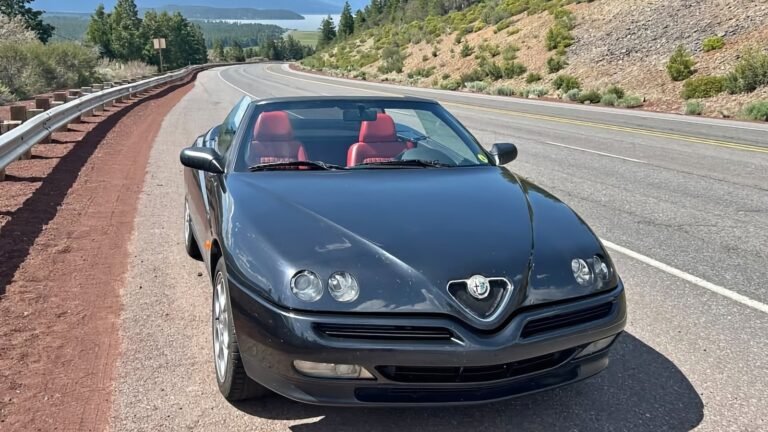

- New study found automatic emergency braking systems are getting better.
- At nighttime, they avoided 60% of crashes, up from 0% just six years ago.
- 2025 Toyota Camry achieved a perfect score as it avoided all collisions at night.
Technology continues to make driving safer. That’s the message from a new study, which found automatic emergency braking systems have significantly improved when it comes to detecting pedestrians at night.
When AAA conducted a test in 2019, it found automatic emergency braking systems to be “completely ineffective at night.” That’s alarming as over 75% of pedestrian fatalities occur after dark.
What’s Changed Since 2019?
To see if things have improved since then, AAA conducted a fresh series of tests using four modern vehicles, including a 2024 Honda Accord, 2025 Toyota Camry, 2025 Chevrolet Malibu, and a 2025 Tesla Model 3, as well as a “robotic pedestrian adult.”
More: Modern Automatic Emergency Braking Systems Are Light Years Ahead Of Their Predecessors
The ‘adult’ would cross in front of the vehicles while they were traveling at 25 mph (40 km/h), which simulates a scenario that could happen in neighborhoods.
The findings were encouraging as automatic emergency braking systems avoided 60% of accidents at night. That’s far from ideal, but a huge improvement from the original success rate of 0%.
Which Cars Handled It Best?

The 2019 Accord failed to detect or respond to the pedestrian at night during the original test. However, the 2024 Accord issued a warning and applied the brakes in three out of five runs. This successfully prevented the vehicle from hitting the pedestrian in two tests, while the third saw a significantly lower impact speed.
The 2025 Camry did a fantastic job as its automatic emergency braking system issued warnings at approximately 73 feet (22.26 meters) and applied the brakes at an average of 42.7 feet (13.02 meters). Thanks to this impressive performance, a Camry never hit the pedestrian.
We’ll gloss over the departed Malibu and note the Tesla Model 3 detected the pedestrian and applied the brakes in all five runs. This avoided a collision 80% of the time, while also reducing the impact speed to 8.7 mph (14 km/h) the only time it failed.

Does Bright Clothing Actually Help?
Interestingly, AAA ran a series of tests to see if high-visibility clothing would make an impact. During the daytime, there was no change in performance. At night, researchers saw both extremes as there was some “improved avoidance” as well as a “complete loss of detection.”
The Accord plowed into the pedestrian all five times at night. That was two times more than without the reflective clothing and it seems like the gear made the pedestrian invisible. On the flip side, the Model 3’s performance actually improved and it was able to avoid a collision all five times.

Stay Sharp, Even With Smarter Cars
AAA’s Director of Automotive Engineering Research, Greg Brannon, said “Recent improvements in pedestrian automatic emergency braking systems are promising,” but “there is still more work to be done.”
He pointed to the mixed performance with high-visibility clothing as an area where “further refinement and testing are necessary to save more lives, including those of our roadside assistance providers.”
As for what you can do, AAA encourages drivers to remain alert and extra cautious at night. People should also never rely on automatic emergency braking systems as they’re simply an aid, and an imperfect one at that.
Much of the same advice also applies to pedestrians, as they need to pay attention and be extra careful when using crosswalks.





